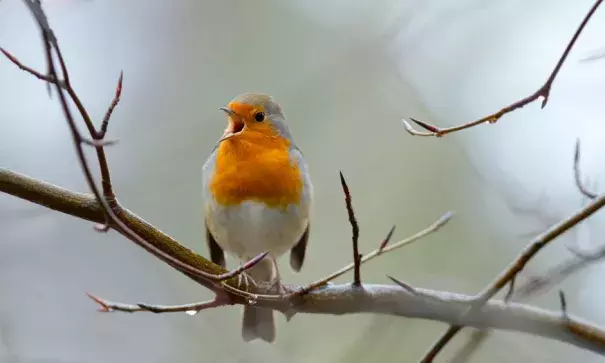Weatherwatch: climate change means lots of birdsong, even in November

The Victorian humorist and poet Thomas Hood took a dim view of the penultimate month of the year: “No fruits, no flowers, no leaves, no birds! – November!”
If he meant no bird song, then, when he was writing, during the cooler climatic interlude known as the Little Ice Age, he would have been spot-on.
Apart from the robin, which unusually among our songbirds holds an autumn territory and so sings throughout the season, the parks and gardens around Hood’s north London home would have been silent in these dark days of late autumn.
But that certainly isn’t true now. Thanks to the effects of climate change, combined with the “urban-heat-island effect” – in which cities are several degrees warmer than the surrounding countryside – London is now a hotspot for unseasonal birdsong. Visit any of the capital’s parks, especially at dawn when the sound of commuter traffic has yet to reach its peak, and you’ll hear a wide range of songbirds.
Listen out for the impossibly loud song of the wren – with the trill my fellow writer Dominic Couzens calls “the twiddle in the middle” – as this tiny bird signals its presence from deep inside hedgerows and shrubberies. Joining the chorus are the great tit, which sings its “tea-cher, tea-cher” song from a prominent twig, the scolding, frantic sound of the blue tit, and the rather monotonous song of the dunnock.
For something a little more exotic, pay a visit to the WWT’s London Wetland Centre or the RSPB’s Rainham Marshes reserve, where you can hear the explosive sound of a relatively recent colonist, Cetti’s warbler, more or less all year round.
Related Content






